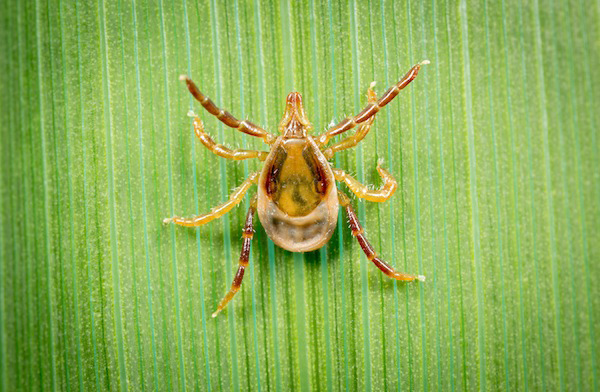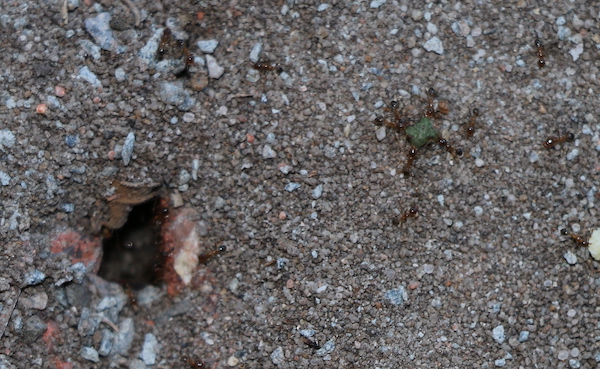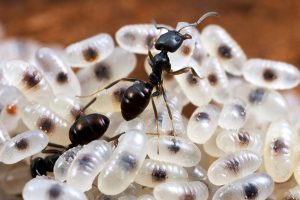Itís a weird thingÖ generally speaking, in Australia, brown ants seem to be more of a pest outside the home than inside the home, whereas black ants tend to be more of a pest inside the home. Letís have...
Itís a weird thingÖ generally speaking, in Australia, brown ants seem to be more of a pest outside the home than inside the home, whereas black ants tend to be more of a pest inside the home.
Letís have a look at the types of brown ant that are the major pest ant species in Australia. None of the brown pest ants are big ants, they are either small ants or tiny ants! Two of the most widespread ants are major invasive pests globally, the big-headed ant (coastal brown ant) and Argentine ant.
Big-headed ant (coastal brown ant)
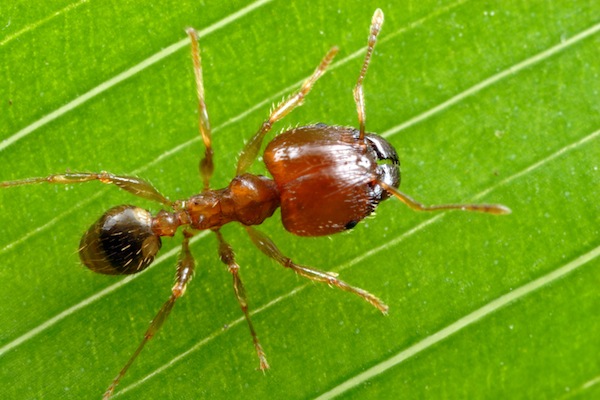 A major worker of the big-headed ant, Pheidole megacephala.
A major worker of the big-headed ant, Pheidole megacephala.Globally known as the African big-headed ant (due to the size of the head on the major workers), in Australia it is often called the coastal brown ant as (guess what) it lives predominantly in coastal areas (and itís brown!). It is more of a sub-tropical species, being found along the eastern seaboard in NSW and QLD, in Perth and Darwin. Although they do have a sting, it canít be felt by humans.
It is one of the worst invasive pests globally and can create super-colonies, with multiple nests, containing multiple queens, all part of the same colony covering large areas. Typically, they are an outdoor problem, digging up dirt around pavers, but in major infestations they will come indoors where they generally feed on oil and protein food sources. Importantly, they can also damage electrical wiring, which can in turn create house fires.
Argentine ant
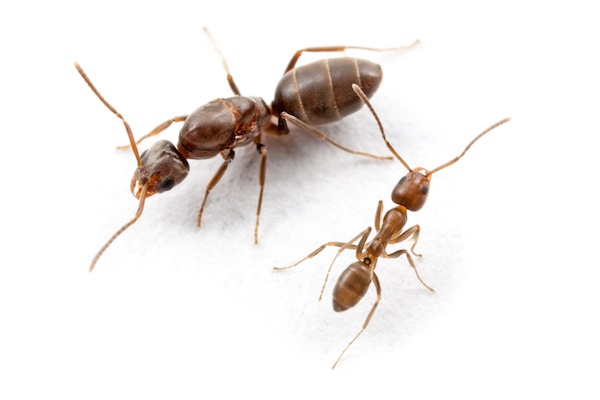 Queen and worker of the Argentine ant, Linepithema humile.
Queen and worker of the Argentine ant, Linepithema humile.Like the coastal brown ant, the Argentine ant is also one of the worst invasive ant species globally and like the coastal brown ant it can form giant super-colonies. However, in contrast to the coastal ant, it is more of a problem in temperate areas, so in Australia it is a big problem in Victoria and Tasmania, but also southern NSW and Perth. Although they do bite, they donít sting.
Argentine ants form very loose nests on the surface of the ground, in the leaf litter or under objects. In major infestations they can literally cover the ground and at this point tend to become more of an indoor problem as they come inside looking for food and moisture, especially in warmer weather.
Pharaoh ant and Singapore ant
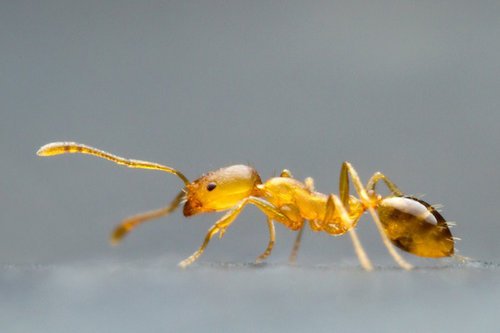 Pharoah ant
Pharoah ant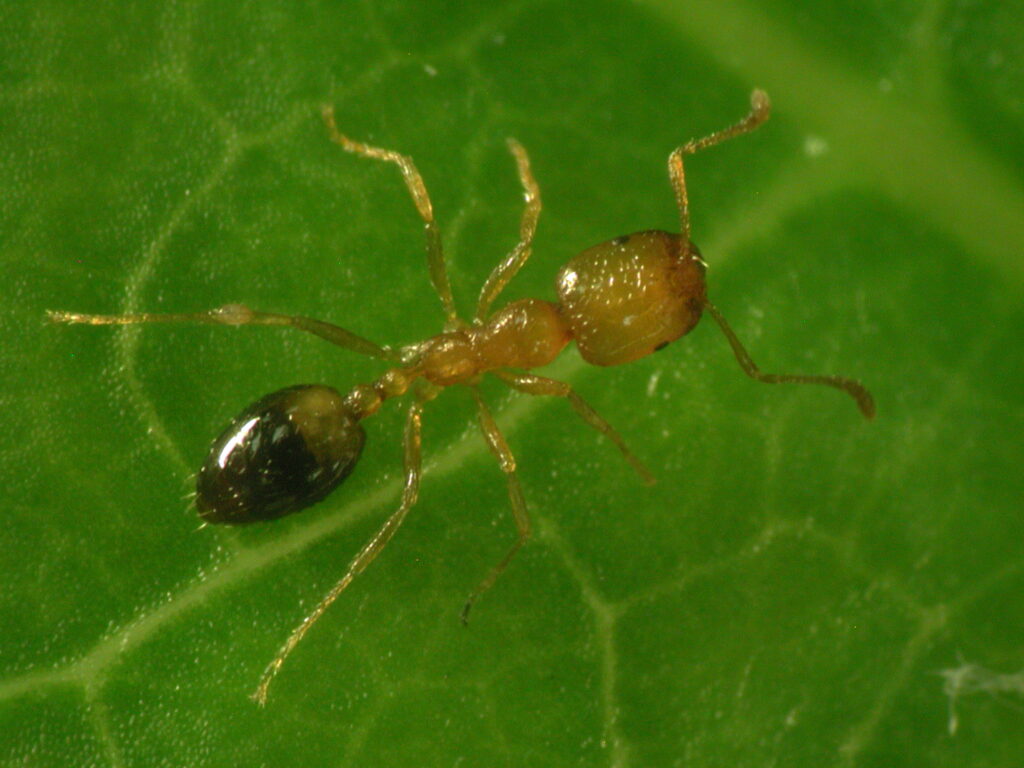 Singapore ant
Singapore antTwo of the tiny brown ants found in Australia are the pharaoh ant and the Singapore ant, both Monomorium species, indeed the two ants look very similar. When viewed side by side, Singapore ants have a darker abdomen than Pharaoh ants, but the most notable difference is that Singapore ants bite and have an irritating sting.
Both are tropical or sub-tropical species, adapting to live inside buildings in sub-tropical climates. This is particularly the case for pharaoh ants which have adapted to living indoors in temperate areas as well. The Singapore ant is also known for nesting in electrical sockets. Both species tend to prefer oil and protein food sources, with the pharaoh ant having a particular preference for blood. As a result, it has become a significant pest issue in hospitals.
Fire ants
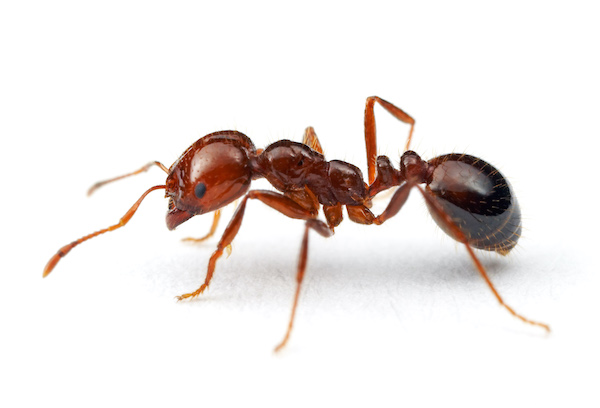 Red imported fire ant
Red imported fire antAlthough only found in southeast Queensland until recently, the red imported fire ant gets a special mention here as it has now been found in northern New South Wales. With much of coastal Australia having a suitable climate for fire ants, the potential area for infestation is massive. With its aggressive nature and serious sting, its spread with have a life changing impact for humans, agriculture, farming and the environment. It is certainly worth knowing what a fire ant looks like.
Red imported fire ants are a red / brown shining ant. Apart from its very painful sting it has two other distinguishing features; firstly, fire ant nests are formed from a mound of loose earth with no obvious entrances (although the ants erupt out of the nest when disturbed) and there is a continuous size gradient of workers from 2 mm to 6 mm long. More information on how fire ants and how to control them.
How to control brown ants
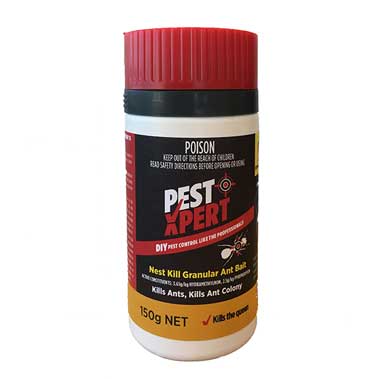
The good news for homeowners that PestXpert Nest Kill Granular Ant Bait has been specifically formulated for invasive ants and is ideal for ants with an oil and protein preference. Simply sprinkle the bait where the ants are active and let the ants do the rest. They will take the bait back to the nest where it is fed to their nest mates, eliminating the nest in 1-2 weeks. Make sure enough is applied for the size of nest.
Certainly, for coastal brown ants and Argentine ants, which form the super colonies, once the ants are eliminated from an area, ants will move back in from neighbouring properties over time. To keep the ants out of the house a perimeter spray around the edge of the building and all entry points with PestXpert Pro Spray Outdoor Perimeter will do the job.
The post Types of Brown Ants in the House and Yard appeared first on PestXpert.




